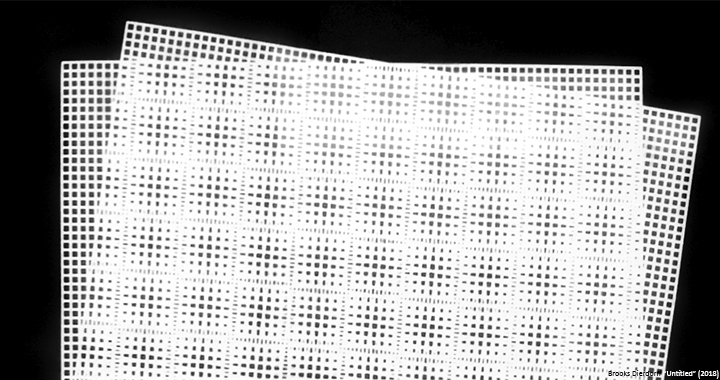March 14 – 18, 2018
Flexspace C, CICA Museum
Statement
Though the foundations of my current practice originate in photography, I currently work across a variety of media
that include video, sculpture, and performance, and installation. Combining conventional and non-traditional
methods and materials ranging from woodworking to video to photograms, I explore the ways in which images
interface between various and often-contesting representations of the natural world. My practice searches for new
meanings in the intentional and incidental forms that we individually and collectively create through our interactions
with nature. Exploring the same subject (e.g. wildlife management) from multiple perspectives, I unearth both the
cultural investments made in specific environments and the ways in which such investments are embedded within
various visual languages.
My inquiry into the mediation of nature by images stems from past bodies of work in which I examined wildlife
management and contemporary hunting culture. These works develop from research involving direct engagement
with hunters, park rangers, and environmentalists as well as archival research of policy documents and image
collections. I am interested in how multiple stakeholders address environmental issues and how their actions affect
the ways we perceive and conceive of nature and the landscape. For example, the photographs in the series Trophy
deconstruct the prevailing codes within hunting culture through manipulating found images of hunting trophy
photographs. Erasing the hunter from the image reveals the conventions through which animals are objectified, and
heightens the visual rhetoric through which humans attempt to dominate the natural world.
In a recent project titled Mohave Desert Mule Deer Refuge (MDMDR) that exhibited at High Desert Test Sites in Joshua
Tree, California, I examine the controversial tactics of wildlife management by creating the ideal deer habitat in
accordance with the recommendations suggested in the National Park Service’s most recent study of Mule Deer
habitats in Southern California. Functionally the project provides food, water, and shelter for the mule deer
population in the Mojave Desert. Conceptually the project is intended to create a conversation that addresses both
the successes and futilities of human attempts to control and to “manage” nature. In much the same way as Mel
Chin’s Revival Field (1993) sought to “sculpt a site’s ecology” by extracting heavy metals from contaminated soil,
MDMDR attempts to sculpt the population of the Mojave Desert Mule Deer—a gesture that alludes to the wildlife
management organizations’ sculpting of various ecologies.
My most recent project titled, Midnight Sun, responds to the ill-fated true story of the Andree Polar Expedition of
1897, in which three explorers set out to be the first to reach the North Pole using a hot air balloon. After crashing
on the arctic ice halfway through the journey, the scientists survived the next few months in the arctic, continuing to
photograph and record their observations of the landscape. These materials and the bones of the men were found on
a remote arctic island thirty years later. In the face of extreme survival conditions and death, the explorers continued
to make photographs. I find myself fascinated by their attempt to explore an unknown and unvisualized landscape,
the urge to continue to make photographs in the face of death, and by their isolated demise following a grand and
ultimately futile gesture. Using photographs sourced from stock imagery, beach towels, Google image searches, and
original imagery, I explore how photographs mediate nature in the contemporary context. My work for Midnight Sun
allows me to translate these concerns through a discrete historical event and to hypothesize about the role of
photography in shaping the conceptualization of a landscape, both for the explorers and for contemporary
audiences: an impetus to explore, a documentary tool, a diary, a life-line, a contingent and incomplete record of the
past.
What are the consequences of experiencing nature through images and fixed representations? My work investigates
this question by making the means of representation transparent. More than being simply a formal issue, exposing
the materiality of an image is an argument for the importance of the visible present (the viewer experiencing the
piece) over the past (the moment the image was made). At a time when images are increasingly becoming detached
from the contexts in which they were created, I feel it a crucial and necessary act to draw attention to the context
within which images are seen, and the visible and invisible structures that support their viewing. At its core, my work
is about revealing the hidden structures in the representing nature and questioning the photograph’s hold on how we
perceive the world around us.
Brooks Dierdorff
Brooks Dierdorff is an artist working in photography, video, sculpture and installation. He has
exhibited his work both nationally and internationally at galleries that include Amos Eno in Brooklyn,
New York; Punch Gallery in Seattle; Disjecta in Portland; High Desert Test Sites in Joshua Tree,
California; Johalla Projects in Chicago; the Ulrike Hamm Gallery in Bissendorf, Germany; and The
New Gallery in Calgary, Canada. His work has been written about in publications including Daily
Serving, Visual Arts Source, Oregon Arts Watch, and Justice League PDX. For 3 years Dierdorff was
co-director of Ditch Projects, an artist-run exhibition space in Springfield, Oregon. He received his BA
from the University of California, San Diego in 2007 and his MFA from the University of Oregon in
2012. Currently he is an Assistant Professor of Photography at the University of Central Florida in
Orlando, Florida.

